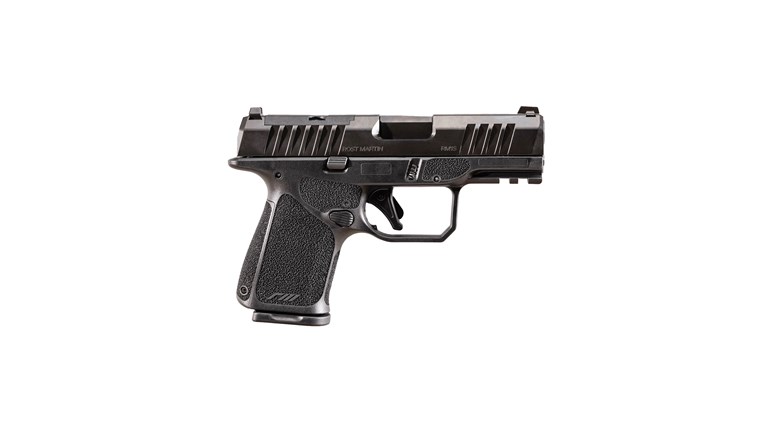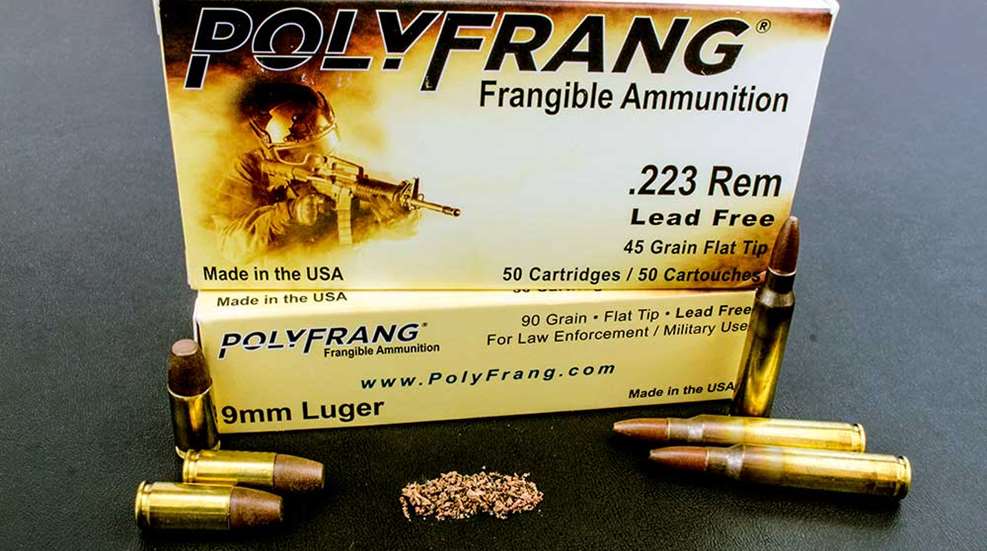
Shooting steel targets is extremely fun and rewarding, as it allows for rapid engagements without having to break your rhythm to repair or replace paper targets. However, doing so at typical defensive-training distances with non-frangible ammunition is inherently unsafe, due to the chance of splashback and ricochets. When considering defensive scenarios, engagements at close distances in real life often result in overpenetration, and missed rounds can travel through most construction materials and still be lethal when they reach the other side. PolyFrang, LLC has ammo offerings designed to reduce these hazards, and after a little bit of research, I decided that I just needed to put the company's munitions to the test.
When it comes to guns and ammo, I have always found that the industry’s most impressive innovation takes place in the ammunition sphere. PolyFrang ammo centers on its proprietary Metal Impregnated Polymer that combines a heat-resistant polymer with a powdered metallic compound that is softer than your barrel material, yet is still effective at stopping a threat. That being said, I had a few ideas on how to test the new rounds so I requested some of the company's 5.56 NATO and 9 mm ammunition.
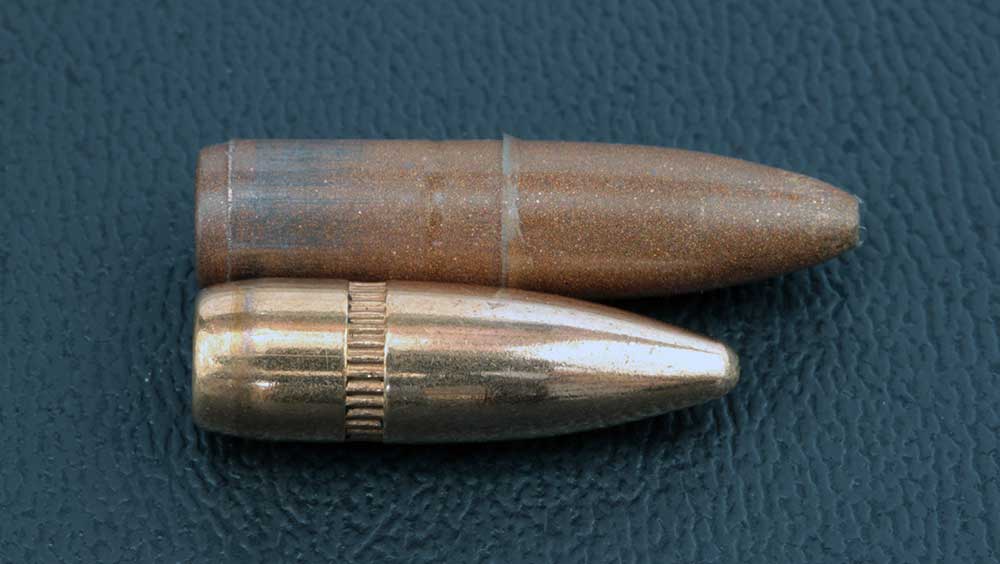
Once they arrived,I looked the rounds over and was able to see that the metal mixture was largely copper-based. However, after reviewing the material data sheet, I was surprised to find that the rounds also contained a fair amount of zinc. Zinc has a low melting point and acts almost like lead when fired. I liked this approach, because it helps maintain a similar density to traditional ammo and often times changing to a less-dense material wreaks havoc on a projectile's profile, making them tough to stabilize. Substituting out the lead makes them healthier to use for indoor training and satisfies many hunting locales that require lead-free ammo.
For our range day, I set out with two objectives: test accuracy and performance. I selected a 9 mm 5-inch Grand Power Excalibur pistol and a 20-inch Head Down Firearms AR-15 with a 1:9-inch twist rate. Both of these firearms have served me well in a multitude of past ammo tests, range courses at Renaissance Firearms Instruction and even a few matches. Whenever possible, I like to use firearms and optics that I know are of good quality and have a history of accuracy to help eliminate an extra set of variables.
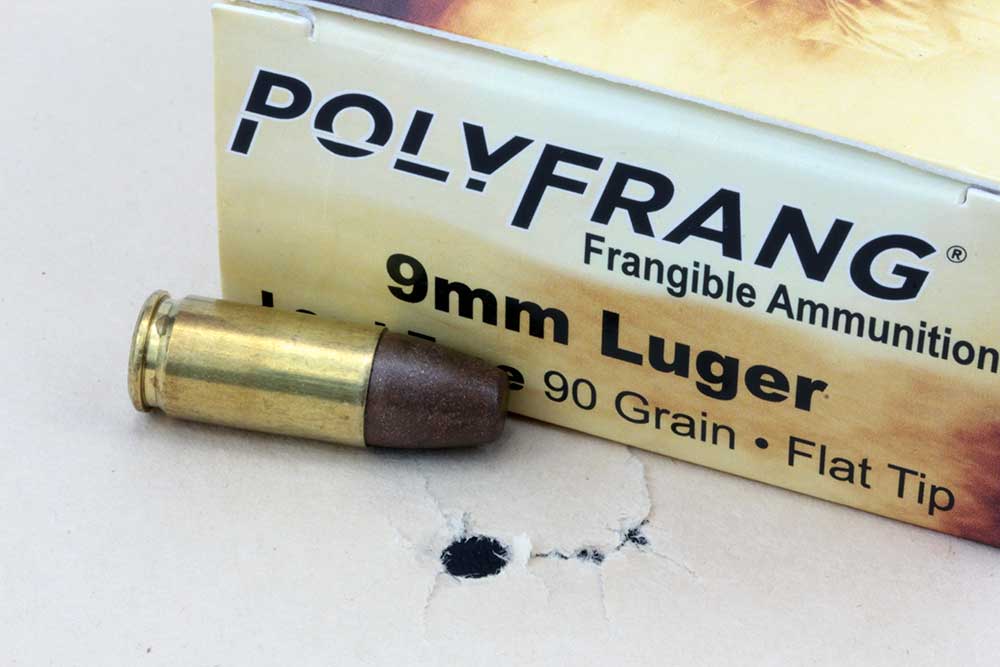
I started my test at 50 yards with the 5.56 NATO ammo. This round was loaded with a 45-grain, flat-tipped bullet with an advertised velocity of 3,100 fps. We tested it at 50 yards and saw serviceable accuracy with the best of our five 5-shot groups measuring 3.75 inches and producing an average of 4.31 inches. Point-of-impact was about 10 inches higher than our zero with standard 55-grain ammo, due to the different ballistics of the polymer-blended bullet.
We backed it up to 100 yards, and accuracy got a little squirrely. Part of the problem is that replacing lead creates a longer bullet of equal or lesser weight. Although lighter, it becomes tougher to stabilize, and our 1:9-inch twist rate just wasn’t cutting it. Having a 1:7-inch twist rate undoubtedly would have produced better accuracy, but the level of accuracy I experienced would be more than adequate to defend my home without the risk of injuring a loved one. Cycling was flawless, and it even locked open on an empty magazine, showing that these rounds produce the correct amount of pressure.
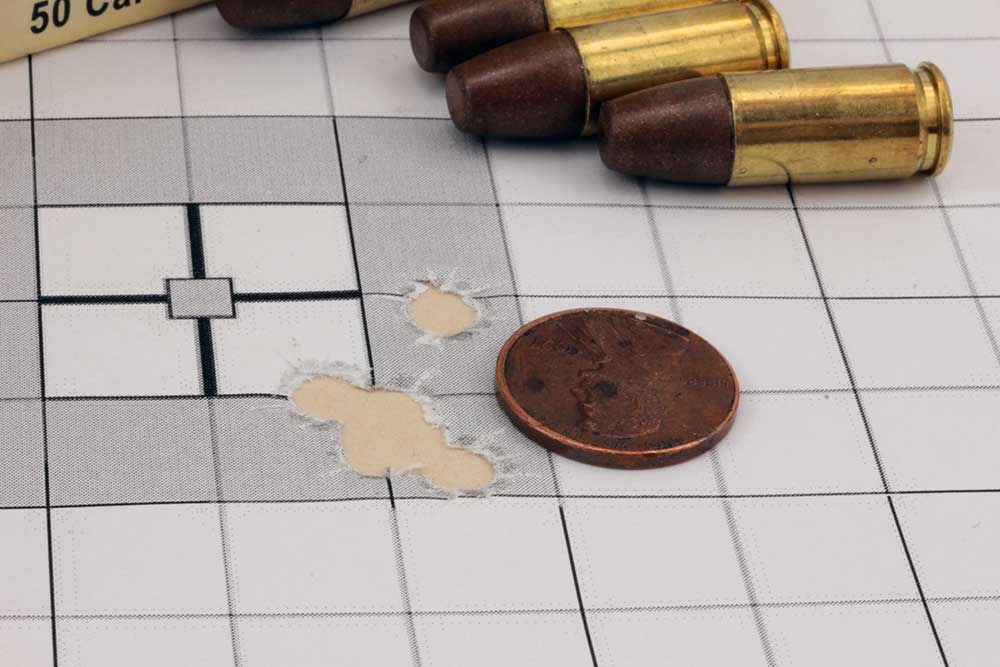
Moving onto the 9 mm rounds, we brought our bench in closer to the standard test distance of 15 yards and performed the same five, 5-shot group testing. Here is where we saw PolyFrang’s true accuracy potential, as all groups fell into a circle that you could cover with a quarter, with our best group only measuring .75 of an inch, very impressive for the little 90-grain bullet. Truth be told, I think the one that fell out of the 4 shot singular hole was my fault. I’m not too proud to admit that I flub a shot once in a while. Overall average was .96 of an inch and functionality was 100 percent.
Next up was a test of how well PolyFrang falls apart upon impact, especially on softer materials. My particular test day brought me some soggy conditions and left me with a pile of wet cardboard, which I decided to employ as a ballistic barrier. On one side of my target stand, I stapled a sheet of this soaking wet mess and then on the reverse side, I stapled a clean paper target. These two layers were separated by about half an inch. Just 12 inches behind my target, I placed a Champion 66-percent IPSC steel silhouette target. This layout was designed to accomplish two goals:
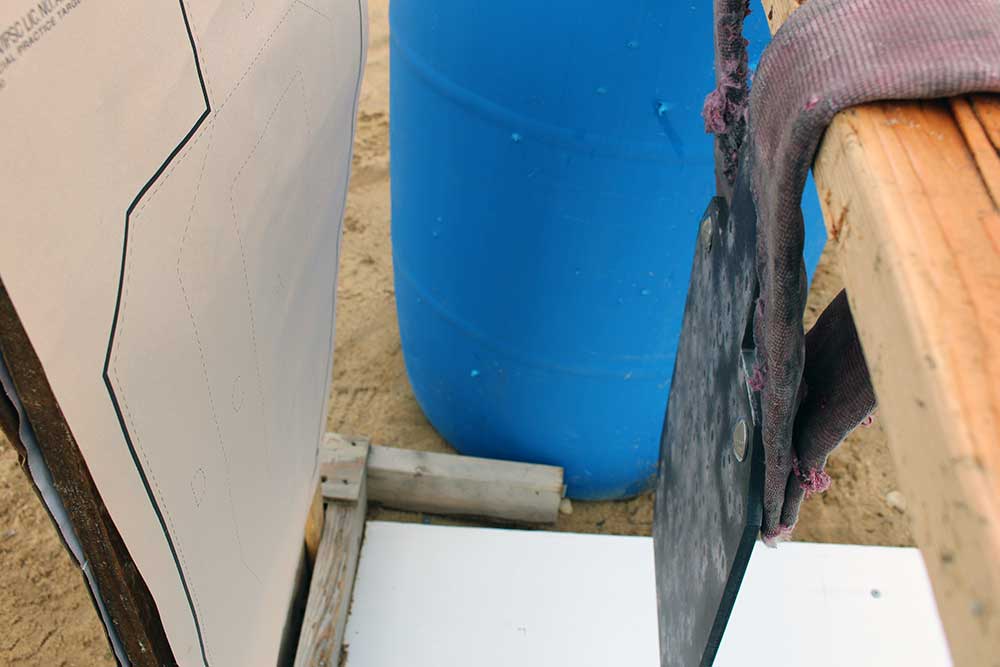
1. See what, if any, disintegration would occur when the projectile passed through the wet cardboard, which would be indicated by irregular shaped holes in the paper target.
2. See if there would be any ricochet, as indicated by puncturing in the opposite direction.
After firing about a dozen rounds of 5.56 NATO and the same in 9 mm, I was amazed in its performance. Not only were there zero ricochets, but the wet cardboard was enough to start the disintegration process, which illustrates that this round will definitely penetrate less through building materials inside of a home. Under our target, we placed a sheet of corrugated plastic and were able to reclaim some of the fragments. The particles were not much larger than a grain of sand, and most didn’t even pass though the thin sheet of plastic just inches below the impact area.
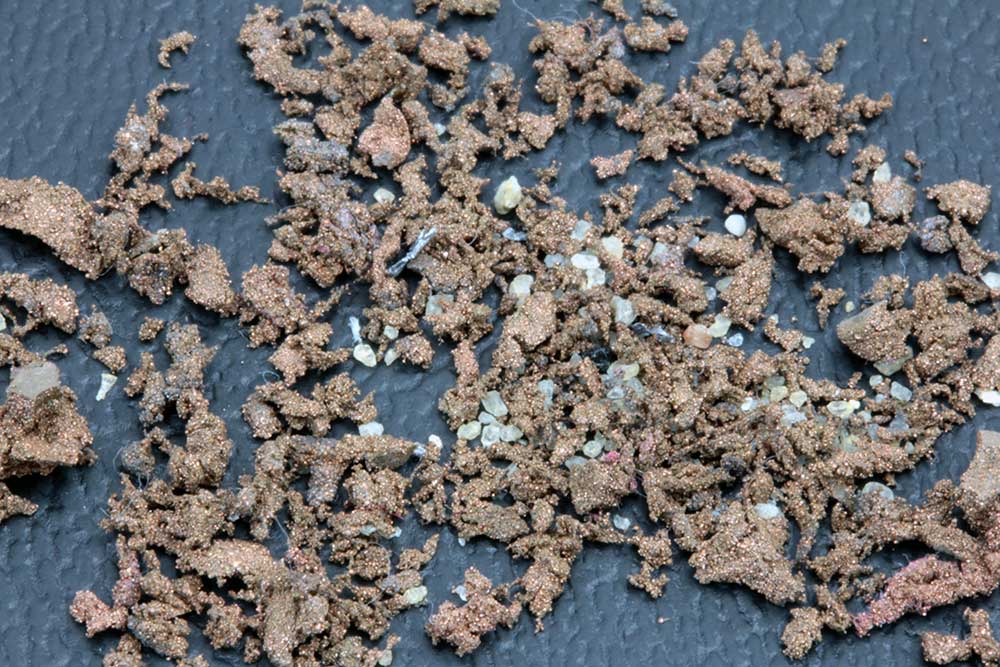
Before leaving the range, I finished off my samples to further ensure its reliability and saved just enough to fill my carbine and handgun magazines that I use to protect my home. From day to day I stake my reputation on an honest reporting of a product's performance. After leaving the range that day with PolyFrang Ammo, I now stake my life on it, too.













